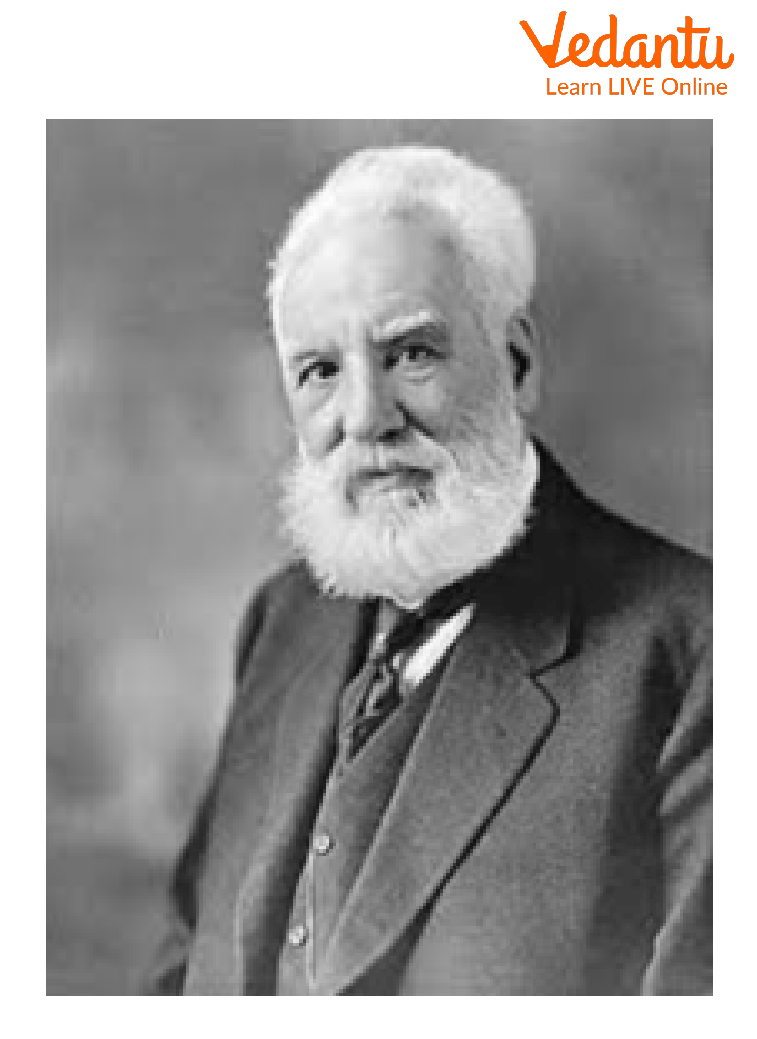




An Overview of Alexander Graham Bell
Alexander Graham Bell was born on 3rd march 1847. The telephone is Alexander Graham Bell's most famous invention. He immigrated to the United States as a deaf educator, and when visiting his deaf mother in Canada, he had the concept of "electronic speech." Everyone else "knew" that voice signals could not be sent over a wire. Graham Bell has contributed one of the world's best inventions that have made communications easy and been witnessed as useful for scientific technologies.

Alexander Graham Bell
His First Invention
Bell was curious about the environment even as a young child, collecting plant samples and conducting experiments. Bell created a straightforward de-husking machine at the age of 12 by fusing revolving paddles with sets of nail brushes. The development of the telephone has generated a great deal of debate and mystery. Naturally, Alexander Graham Bell is credited with the invention of the telephone. Even though he was the first to patent his concept, he was not the initial person to think of a talking telephone.

The First Telephone was Invented
Other Discoveries
Tetrahedral Kites - Bell created the tetrahedral kite utilising common "tetrahedrons," or standard four-sided polygons. The most substantial known construction is this pyramid-shaped one. His efforts to develop a framework that was expandable and large enough to hold a man and a motor led to the creation of the kite. Bell intended to use the tetrahedron form as a foundation for what we now refer to as a "flying machine," which he described as an "aerodrome." The aircraft would have a gasoline engine and a pilot flying in the future. Bell launched his biggest tetrahedral kite in 1907.

Tetrahedral Kite
Hydrofoils - Bell was worried about safety even when he was beginning to experiment with aviation. He was never delighted when his colleagues were putting their lives in danger 30 or 40 feet in the air. He focused on devices that could cross water because it was healthier for a crash landing there. He turned to look at the hydrofoil, which raised the moving boat out of the water using submerged blades. However, hydrofoils could not move very quickly at that time. Bell produced numerous hydrofoil versions, some of which were quite unstable, but most proved unbeatable.

Original Image for Hydrofoil
Facts About Alexander Graham Bell
An influential scientist, engineer, and inventor was another name for the great Alexander Graham Bell.
When he was 11 years old, his father gave him the middle name "Graham" as a birthday present. He had initially requested a middle name similar to his two brothers.
Bell conducted sound experiments using phonautographs and harmonic telegraphs, allowing for transmitting such information over a single wire to record sound.
Bell also had enthusiasm in other scientific areas, working on projects including creating hydrofoil watercraft, performing research in medicine, looking for alternate fuel sources, and testing metal detectors.
Famous words from Alexander Graham Bell include "The secret to success is preparation before anything else."
Conclusion
Scottish-born engineer and inventor Alexander Graham Bell patented the first workable telephone. In 1885, he also contributed to the American Telephone and Telegraph Company. Bell's later life was highlighted by ground-breaking work in fibre telecommunications, hydrofoils, and aviation. Bell had a significant impact on the National Geographic Society.
FAQs on Facts About Alexander Graham Bell's
1. Who answered the phone first and said hello?
Thomas Edison is credited with inventing the phrase "hello" for telephone greetings; one story claims that he mistakenly said "hullo" to show his surprise. Ahoy (used on ships) was Alexander Graham Bell's first choice for a phone greeting.
2. What kind of impact did Alexander Graham Bell have on others?
The eminent scientist is known for his ground-breaking contributions to sound technology and the advancement of deaf education. His most famous creation, the telephone, fundamentally altered how people communicate with one another.
3. What principles did Alexander Graham Bell uphold?
His second proposal included the abolition of residential schools, a ban on the use of sign language in deaf education, and a ban on deaf teachers instructing deaf students. Bell believed that by taking these steps, deaf individuals would be encouraged to use their oral abilities and participate more fully in hearing culture.









